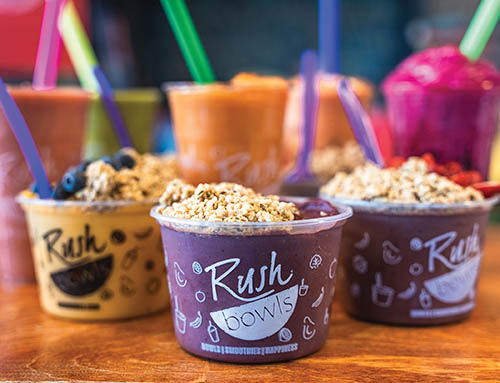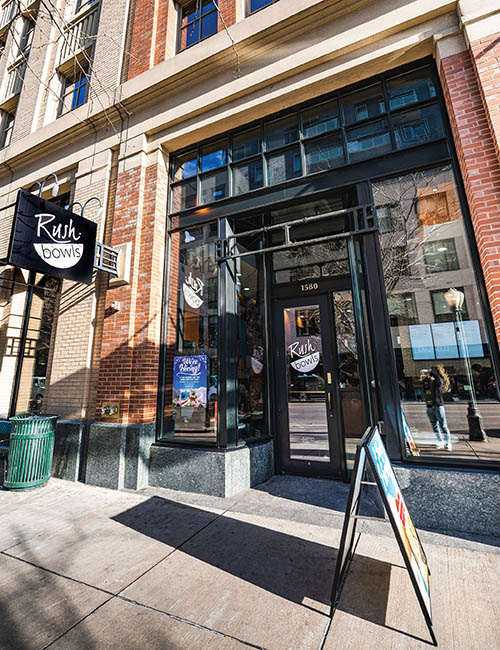— By Andrew Pudalov —
How to make the most of restaurant spaces with less square footage.
It’s natural in the restaurant industry to have the perception that more is more, such as more menu offerings or more seating options. While some concepts may function better with this approach, it’s important to look at the individual restaurant and examine what those target customers desire and what makes the most sense operationally. For square footage, Rush Bowls is guided by an efficiency-driven model that benefits each of its locations in many ways, from increased profitability to enhanced customer experience. However, it’s not as simple as cutting the size of the restaurant in half. The adoption of a smaller footprint must be done strategically.

Creating a proper store model starts with thoughtfully designing a floor plan. The key here is to balance space between the customer areas and the back-of-house areas. Depending on the style of restaurant, multiple zones need to be taken into consideration. For example, Rush Bowls is a fast-casual restaurant where some guests opt to dine in, but most tend to take their orders to-go. This means that an optimal floor plan would reflect that customer experience and anticipated flow pattern. As for employees, they need enough room behind the counter to prepare menu items properly and swiftly. To maintain that level of efficiency, it’s important to prevent bottlenecks and pre-determine any potential obstacles so that solutions can be incorporated into the final floor plan.

Taking a closer look at those behavioral patterns and operational needs, restaurant teams should ask themselves which elements will support their success metrics and brand positioning. Customers of fast-casual restaurants need a zone for items such as utensils, napkins, fountain drinks and more. For restaurants with a bold, playful brand like Rush Bowls, they can also consider creating a photo op moment in their space for guests to capture a snapshot of their menu item in front of the logo or an interesting display. Including a focal point like that not only provides the restaurant with an eye-catching, on-brand aesthetic, but it can also open the door for user-generated social media content to boost brand exposure. That’s free marketing that doesn’t cost a lot of square footage.

Operationally, utilizing space-saving innovations, such as built-in storage solutions and multi-functional equipment, is a game changer. This approach can also be reflected in the elimination of excess prep space. At Rush Bowls, the menu’s blended bowls, smoothies and signature protein bites do not require any actual cooking equipment, like grills or hoods, so necessary counter space is minimal. When debating which inventory items should go where, employees should remember those flow patterns to ensure strategic placement that creates a seamless experience for both the customer and the employee. Additionally, investing in digital solutions does more than just increase accuracy and efficiency of operational tasks. Having most, if not all, administrative tasks streamlined through a digital platform means less space is required for physical document storage and other office supplies.

The key takeaways here all center around developing an experience that is true to the brand and promotes how it wants guests and team members to feel each time they step into the restaurant. For new and existing concepts alike, it’s imperative to regularly rethink approaches to cornerstones of a business, like internal operations tactics and floor plan design choices. For restaurants to be successful and maintain profitability, the teams behind them must always remember that the hospitality industry and guest expectations constantly evolve. It’s their job to ensure concepts, from fast-casual to fine dining, are incorporating innovative solutions and exceeding those expectations. Customers and team members will both be thankful when their experience is of the utmost importance.
— Andrew Pudalov is founder and CEO of Rush Bowls. In 2004, Pudalov left a New York City finance career to launch the first all-natural bowl/smoothie bar in the University Hill district of Boulder, Colo. Franchising since 2016, Rush Bowls currently has more than 40 restaurants across 21 states and over 100 additional locations in various stages of development with expansion to more than 24 states. For more information, visit www.rushbowls.com.

